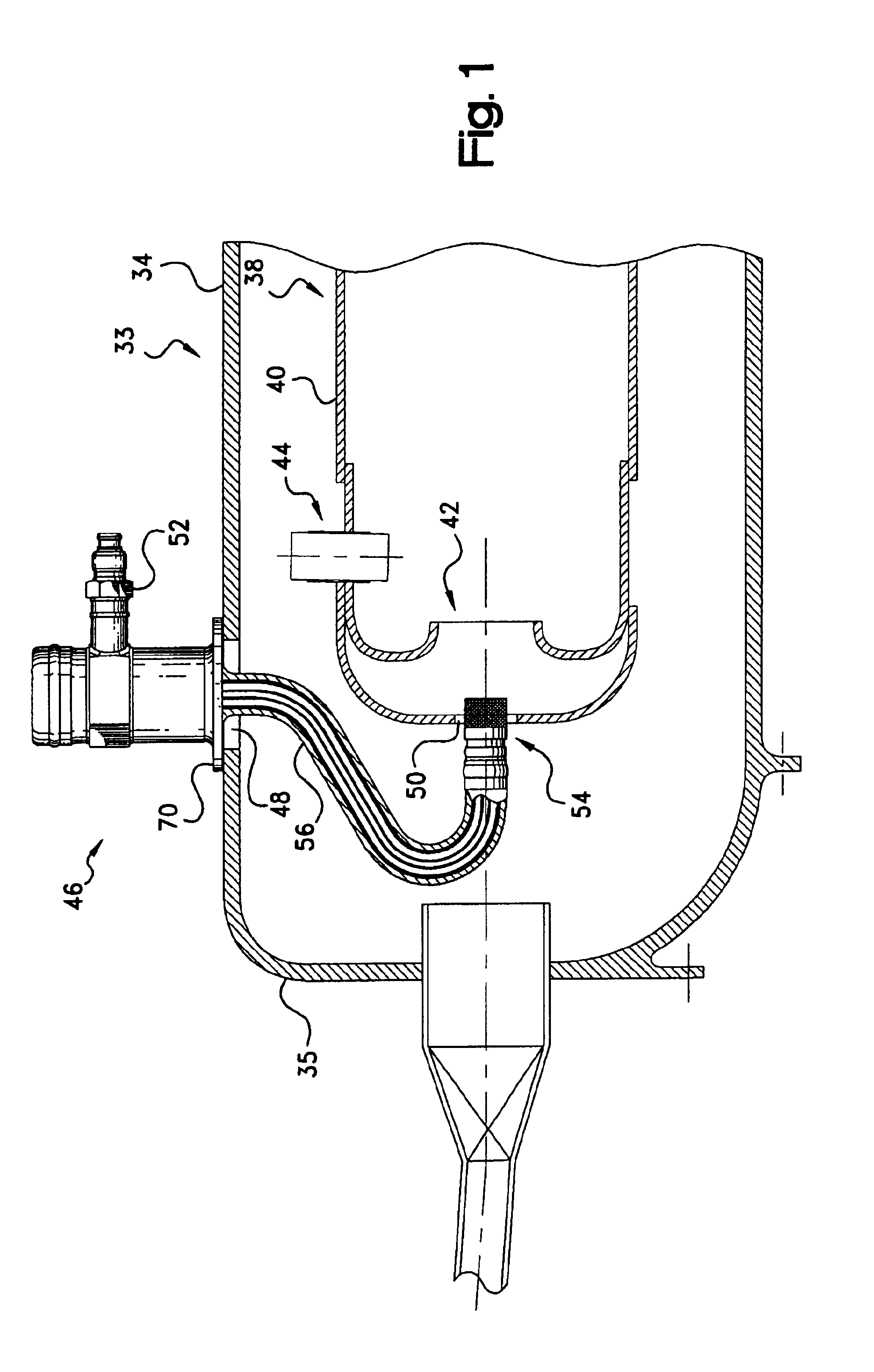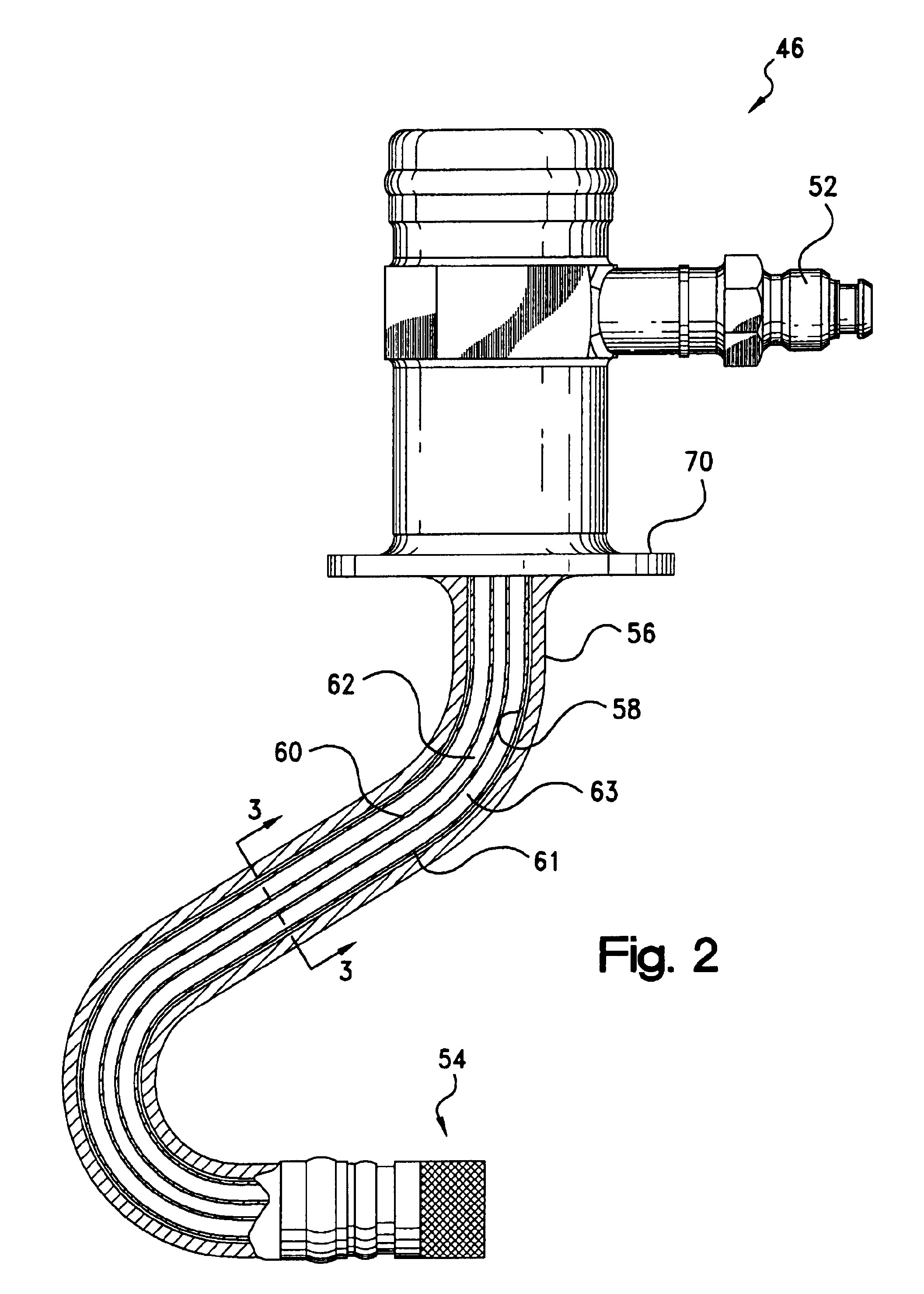Nozzle with fluted tube
a technology of fluted tubes and nozzles, which is applied in the direction of engine starters, turbine/propulsion engine ignition, turbine/propulsion fuel heating, etc., can solve the problems of affecting the efficiency or usability of injectors, affecting the air flow to the combustor, and occupying valuable space in and around the combustion chamber of heat shield assemblies
- Summary
- Abstract
- Description
- Claims
- Application Information
AI Technical Summary
Benefits of technology
Problems solved by technology
Method used
Image
Examples
Embodiment Construction
[0021]Referring initially to FIG. 1, a gas turbine engine for an aircraft is illustrated generally at 33. The gas turbine engine 33 includes an outer casing 34 extending forwardly of an air diffuser 35. The casing and diffuser enclose a combustor, indicated generally at 38, for containment of burning fuel. The combustor 38 includes a liner 40 and a combustor dome, indicated generally at 42. An igniter, indicated generally at 44, is mounted to the combustor 38 and extends inwardly into the combustor for igniting fuel. The above components are conventional in the art and their manufacture and fabrication are well known. It should be appreciated that this is only a schematic illustration of a gas turbine engine for the present invention, and that the actual engine structure depends upon the particular application.
[0022]A fuel injector, indicated generally at 46, is received within an aperture 48 formed in the engine casing and extends inwardly through an aperture 50 in the combustor li...
PUM
 Login to View More
Login to View More Abstract
Description
Claims
Application Information
 Login to View More
Login to View More - R&D
- Intellectual Property
- Life Sciences
- Materials
- Tech Scout
- Unparalleled Data Quality
- Higher Quality Content
- 60% Fewer Hallucinations
Browse by: Latest US Patents, China's latest patents, Technical Efficacy Thesaurus, Application Domain, Technology Topic, Popular Technical Reports.
© 2025 PatSnap. All rights reserved.Legal|Privacy policy|Modern Slavery Act Transparency Statement|Sitemap|About US| Contact US: help@patsnap.com



